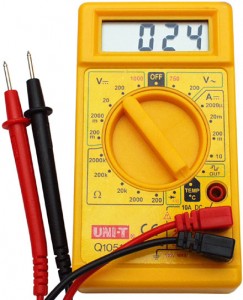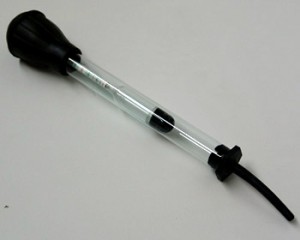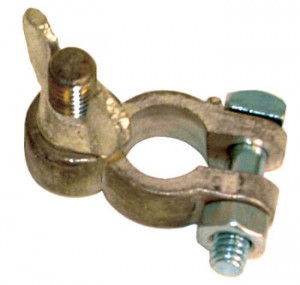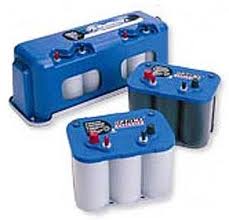Keeping your marine battery working
In: Boating
5 May 2011 Most larger boats alternate getting their power from a genset or the yellow cord, so it’s easy to overlook the batteries — but lead and acid need love, too. Fortunately, taking care of your batteries is about as simple a seagoing maintenance chore as there is, usually demanding little more than visual inspection and a quick wipedown with a rag. Ignore your batteries, though, and one day you’ll turn the key and hear not your engine roaring to life, but only the slow groan of an underpowered starter motor.
Most larger boats alternate getting their power from a genset or the yellow cord, so it’s easy to overlook the batteries — but lead and acid need love, too. Fortunately, taking care of your batteries is about as simple a seagoing maintenance chore as there is, usually demanding little more than visual inspection and a quick wipedown with a rag. Ignore your batteries, though, and one day you’ll turn the key and hear not your engine roaring to life, but only the slow groan of an underpowered starter motor.
Your batteries demand little attention, so don’t deprive them. Someday you may want to start your engines.
Clean and Secure Connections
Most important? Maintain secure connections; a loose or corroded clamp can make even a fully charged battery seem anemic. If the yard stores your batteries every winter, don’t assume they cleaned the posts and clamps in the spring. Do it now. It takes only a wrench to remove the clamps, some emery cloth to clean them. Scrub both the post and the inside of the clamp with the cloth until they shine like silver. Some people cover their terminals with grease, but I prefer fighting corrosion with regular inspections. Keep the battery tops clean and dry, too.
Terminal connections are basic, but that is why they need care.
Check Fluid Levels
If your batteries have caps (most deep-cycle batteries do), open them and check the fluid level. Add clean water (distilled is best – I use leftover boiled water from my wife’s teakettle) until you can see a bull’s-eye when you look down into the opening. (This will be obvious when you do it.) Don’t overfill, or the excess fluid – now acidic electrolyte – will vent out through the caps when the battery heats up during charging. Check the fluid level monthly. If you always have to add water, maybe you’re overcharging the batteries, a common problem if your charger is an old-fashioned model that never completely shuts off.
Charge the batteries and let them sit overnight. In the morning, apply a 15- or 20-amp load to each one for a minute or two to remove any remaining surface charge, then check the voltage. Don’t rely on your instrument panel’s voltmeter – instead, use a portable multimeter across the terminals. A fully charged wet-cell battery reads about 12.6 volts across the terminals, AGM batteries 12.8 volts. Anything below 12.4 volts indicates it’s time to think about a new battery, but if you’re in doubt, call an expert: There are more sophisticated test methods for analyzing battery condition, but they require specialized equipment and skill.
 Multimeters are inexpensive to buy.
Multimeters are inexpensive to buy.
Testing the Juice
One test that doesn’t require much skill, other than being able to remove the battery caps, is checking each cell with a hydrometer — basically a large eyedropper with a float inside it that measures the specific gravity of a fluid. The electrolyte in a fully charged battery has a higher concentration of acid, and therefore a higher specific gravity (at least 1.265), than it does in a partially or fully discharged battery. All cells should read within a few hundredths of each other. One dead cell kills the whole battery, but often the problem is sulfation of the plates, which can sometimes be reversed with an equalizing charge applied by a three-stage charger. Otherwise, open your checkbook.
 Hydrometers readings are simple and quick.
Hydrometers readings are simple and quick.
Battery Buying
When you buy new batteries, choose only high-quality marine batteries: They are ruggedly built to withstand shock and vibration, and have thick plates that are more forgiving of deep discharge, even if they’re technically “starting” batteries. I prefer AGM (Absorbed Glass Mat) batteries rather than “flooded” models: The electrolyte is trapped in glass-fiber mats, so it can’t leak out even if the battery splits open. AGMs recharge more efficiently, produce less hydrogen fumes and have a lower rate of self-discharge (voltage loss while idle) than flooded batteries. Yes, they cost more, but what doesn’t?
Welcome to BeaverLakeBoaters!
This site is devoted to all things Beaver Lake Arkansas
Categories







Comments are closed.